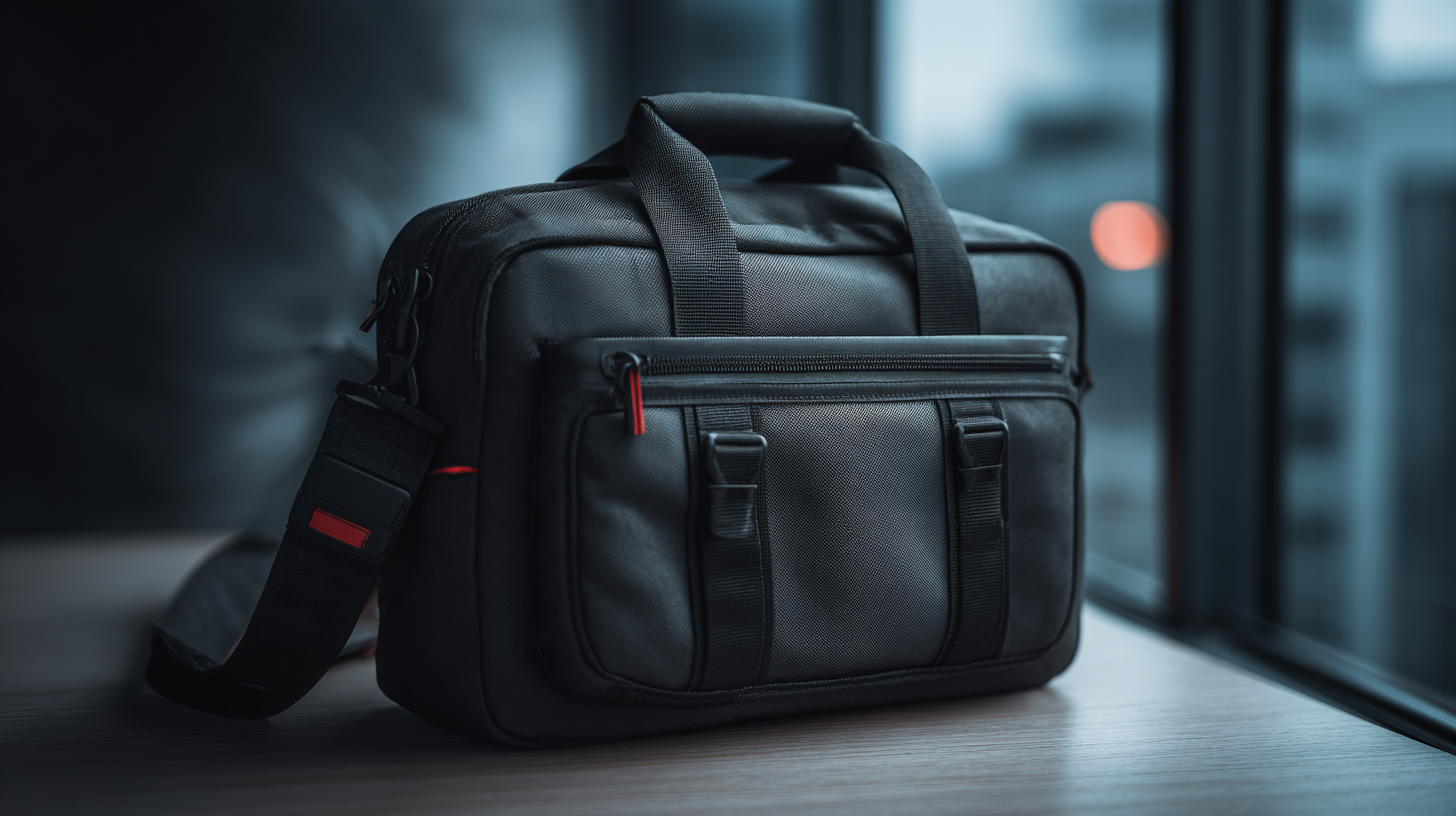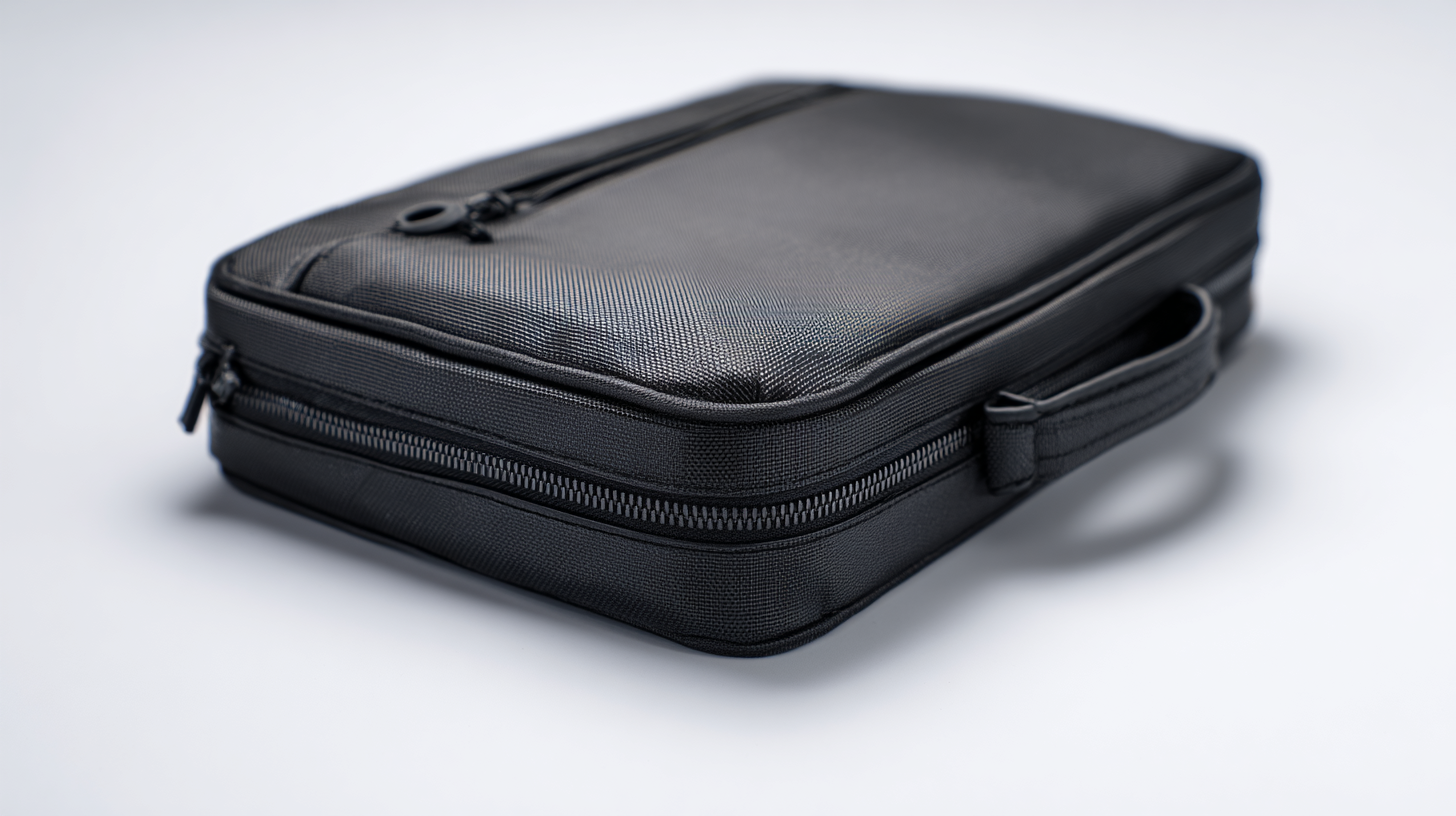In recent years, the global demand for high-quality laptop accessories has surged, with the neoprene laptop bag emerging as a preferred choice among consumers worldwide. According to a report by Market Research Future, the global laptop bag market is projected to reach approximately $18 billion by 2025, growing at a compound annual growth rate (CAGR) of 5.2%. This growth is fueled by advancements in materials and manufacturing processes, making neoprene a desirable option due to its durability, flexibility, and protective qualities. As international buyers increasingly seek reliable, stylish, and functional products, the importance of leveraging China's manufacturing capabilities becomes apparent. By harnessing the potential of made-in-China neoprene laptop bags, companies can position themselves competitively in this thriving market, appealing to an audience that values both quality and affordability.

The rise of neoprene as the preferred material for laptop bags in global markets is a testament to its adaptability and practicality in our increasingly mobile world. With the laptop bag market projected to reach $12.1 billion by 2034, driven by the surge in demand for portable computing devices and the shift towards remote and hybrid work, neoprene stands out as an ideal choice. Its lightweight, moisture-resistant properties not only provide essential protection for devices but also align with contemporary lifestyle needs, making it a popular selection among consumers seeking both style and durability.
As the global demand for diverse laptop bag options increases, manufacturers in China are seizing the opportunity to showcase their neoprene creations. The material's flexibility allows for various designs that cater to different customer preferences, whether for business professionals, students, or casual users. With sustainability and functionality at the forefront of consumer concerns, neoprene’s versatility positions it as a favored option, reflecting a broader trend where practicality meets fashion. As markets continue to evolve, neoprene bags are not just a trend—they represent a significant shift in how we perceive and utilize carrying solutions in the modern digital era.

In the realm of global trade, understanding import and export certifications is paramount for those looking to buy neoprene products, including the increasingly popular neoprene laptop bags. Neoprene, a versatile synthetic rubber, is often subject to compliance regulations that vary by country. According to a report by Global Trade Magazine, over 70% of buyers prioritize certifications such as ISO 9001 and REACH when sourcing neoprene goods, as these designations help ensure quality, safety, and environmental responsibility.

Moreover, the importance of the Certificate of Origin (COO) cannot be understated in trade negotiations. A study by the World Trade Organization revealed that products with a verified COO could enjoy tariff reductions of up to 50% in certain markets, which significantly enhances their competitiveness. For global buyers, gaining an understanding of these certifications not only facilitates smoother import processes but also opens doors to a broader market. As China continues to emerge as a leadership hub for quality neoprene goods, recognizing and navigating the complexities of these certifications will empower buyers to make informed decisions and leverage the full potential of the global trade landscape.
When it comes to choosing the best neoprene laptop bags, international buyers should focus on several key features that ensure both functionality and style. First and foremost, the quality of the neoprene material is essential. Look for bags made from high-grade, durable neoprene that not only provides protection against bumps and drops but also offers water resistance. This added layer of safety is crucial for safeguarding valuable electronics during travel.
Another important aspect to consider is the bag's design and capacity. Opt for a bag that is not only spacious enough to accommodate various laptop sizes but also features additional compartments for accessories like chargers, pens, and documents. Ergonomically designed straps and handles are equally vital, ensuring comfort during prolonged use. Additionally, stylish designs that reflect current trends can elevate the overall appeal of the bag, making it a must-have accessory for tech-savvy individuals on the go.
As global awareness of environmental issues rises, the demand for eco-friendly tech accessories continues to gain momentum, with neoprene laptop bags leading the charge. According to a recent report by Grand View Research, the global eco-friendly products market is expected to reach USD 150 billion by 2027, reflecting a compound annual growth rate (CAGR) of 9.5%. This surge is driven by both consumer preference for sustainable options and growing governmental regulations favoring environmentally responsible manufacturing practices.
Neoprene, a material known for its durability and water resistance, presents a perfect opportunity for manufacturers to cater to this eco-conscious wave. The increasing interest in products crafted from natural or recycled materials has pushed brands to innovate. Recent surveys indicate that nearly 70% of consumers are willing to pay a premium for products that are environmentally friendly, and the tech accessories industry is no exception. Companies that prioritize sustainability in their neoprene laptop bags are likely to capture a significant portion of the market, positioning themselves as leaders in this evolving landscape. With global buyers increasingly seeking responsible choices, the future of neoprene solutions appears promising.
This chart illustrates the growing demand for eco-friendly neoprene laptop bags among global buyers from 2020 to 2024, showcasing a significant upward trend as awareness of sustainability increases in the tech accessories market.
The landscape of neoprene laptop bag manufacturing showcases China's robust capabilities compared to other regions such as Germany, Japan, and India. According to recent analyses, China's manufacturing sector remains unparalleled in its scale and efficiency. The "Made in China 2025" initiative has significantly enhanced technological advancements, as evidenced by increased exports of high-tech products. Studies indicate that China has overtaken counterparts in producing not only consumer goods but also high-quality components vital for laptop accessories.
Germany, while known for its precision engineering, faces challenges related to cost efficiency in the production of neoprene bags. In recent reports, it has been noted that German manufacturers struggle with rising labor costs and regulatory hurdles, which impact their global competitiveness. Meanwhile, India is gradually emerging as a contender, bolstered by government initiatives to attract foreign direct investment; however, it still lags in quality control and supply chain sophistication when measured against China. This comparative analysis highlights the intricate dynamics dictating the global market of neoprene products, underscoring China's dominance and the distinct challenges faced by other manufacturing hubs.
